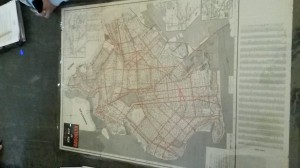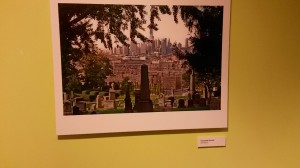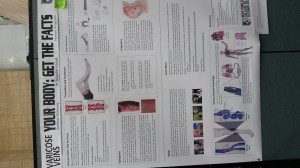During the course of this semester, I feel that I have grown mentally as well as academically. I started college with high expectations as to how things would go. Over these view months my work process has improved because I have accomplished a new sense of discipline when it comes to completing assignments. As soon as a new project was assigned, I found my self brainstorming and planning out the timing and hours that I would have to devote to the work. There were numerous times that I had to turn down my friends on weekends because I knew that I couldn’t balance all of these things. I spent 2-3 hours a night writing out and revising work for the projects and asking questions where I found instructions confusing. I realized that college was nothing like high school because I would try to apply my self to my work, but still find it difficult to get an A. I was willing to re-work assignments that I felt had too low of a score because I wanted to start off my first semester with a high GPA. Somethings I think I can work on is adding more information when required, and using more descriptive language to help readers understand the text. I believed that I excelled at planning out and executing assignments in order to hand them in on time. I did a good job at answering all the questions asked,and following the guidelines that are provided. One thing I can tell my peers about my work, is that it will not stop improving over my college career because I know there’s always room for improvement.
Category Archives: Coursework
Poster Exhibit
A picture of language: Summary
This article by Juana Summers depicts a technique that not many people may know about called diagramming sentences. For people who are not familiar with this concept, it is often seen as confusing and not useful when it comes to using it in the subject.In this specific structure, the sentence is nearly impossible to make out for most. In some ways it is described as a way for people to ” draw a picture of what the language looks like”. But according to most students, this concept is”an intrusion or as an absolutely confusing,crazy thing that they couldn’t understand”. However, if they’re taught in a way that they can easily grasp, it will allow them to structure sentences much more effectively. The example given in the beginning of the article clearly displays how this technique should be executed.
BHS Research

On today’s field trip we went into the BHS library which consisted of all sorts of primary information that can’t be found anywhere else. We mainly focused on maps of Brooklyn from different time periods . This is something that I would most likely include into project 4. For example, in my group we had a manuscript map of Brooklyn in 1856 which depicted the cut-off boundaries of farm lands that people owned. There was also a clear detailed drawing of the cliff of Brooklyn Heights. This was before the construction of the Brooklyn bridge, so the steam boat was a popular way to travel between the boroughs. Another map, which was printed, displays the subway map map from 1955. As we know, the train system was originally a series of companies that operated in different ways. This map is a significant piece of history that I could add to my project. Lastly, we saw a large booklet of maps that was created by the fire department during the time. From what I learned in class, civilians that lived in homes made of wood would be charged higher than someone in a brick house because of the higher chance of a fire. These different maps of Brooklyn give me a better understanding of it’s history that goes way beyond my time. Each version allowed me to see every phase that has come. I should have a better grasp of this concept from the research which will be a good guide for this project.
BHS Field Trip Reflection
In today’s class we visited the The BHS on Pierrepont St, In Brooklyn. This trip was a different experience that allowed me to see first hand primary resources, as well as photos to go with them. In the wonder exhibit, I applied the things we have learned such as the rule of thirds or a juxtapositions into the pictures that we have seen. There was one particular image that I found interesting during the walk. This frame consists of a cemetery filled with tomb stones and tall city buildings that can be seen in the distance. I immediately saw an overlap. In my opinion, the cemetery represents death were as the buildings in the distance depict civilization or flourishing life. 
GPS Article Summary
This article by Lex Berko brigs up a concept that an individual can choose between a faster route, or a route that is more pleasant to experience. He shows that the primary job for maps is just to get you to a certain destination. But it doesn’t tell what you can encounter on during the course of your travel. the Yahoo company who ones Flickr uses this to conduct experiments to go into depth with their concept. They came to the conclusion that a route that is considered to be more pleasant would take a person a few minutes out of their way. Whether the person decides to sacrifice time or not varies.
When I read this article I immediately thought about other companies that are beginning to offer these kind of features in their map apps. In the next year or two, this may be something that every map will have as an option. It makes me think of how much we are beginning to advance with technology to the point where we can choose between something this simple. In my opinion, I would be interested in taking a detour, if it meant that I could visit the candy store near the supreme court on the way to class. Taking such a route would be more pleasant for me because I get to visit one of the only stores in Brooklyn that is fully dedicated to candy. Therefore my motive for taking a different route would be for food. It’s generally different for everyone because each individual has their own idea of what a pleasant route would be.
Article Summary
Title: “A literary visitor strolls in from the airport”, article by Charles McGrath
This passage entails a story about a Mr. Self, A cab driver from London who comes to New York for the first time on December 6, 2006. The text captures the idea that walking throughout the city is not a common today as it used to be many years ago. It reveals Mr. Self’s past as a heavy alcoholic and and a serious drug addict. It also shows how he managed to put that aside by beginning walking as a replacement or a form of coping. McGrath shows how walking through the city of New york caused Mr. Self to be able to see aspects of the land that many others have not discovered because they drive rather than walk. He even says, “People don’t know where they are anymore” with a tone of slight frustration because walking through an are is the only way left for a person to explore. It also connects to Colson Whitehead’s “City limits” with the concept of overlapping cities when Mr. Self points out the interface of a black and Hispanic neighborhood to an Orthodox Jewish area.Most individuals may not even notice that such an overlap exist because no one thinks of walking along highways, or even walking to the heart of the city all the way from an airport.
The Boston Photographs: Summary
This article signifies a very dark time concerning the death of a woman and the near death of a child. The photos that were taken during this event bring back much emotions for people who heard about it or were in the are that day. The author explains how she never meant for things to turn out in such away. Originally, it was supposed to be a picture frame of a heroic fire fighter attempting to get a couple of citizens out of the way of danger. In an instant things took a turn for the worst when the platform collapsed and they could do nothing but go in the way of gravity. At that moment the author had caught several shots before the young lady fell to her demise. She explains that newspapers do not usually post any photos of death. She reveals that you never actually see a body of the person who died in the papers. She clearly expresses that death is apart of life, so what is the point of hiding something such as this.
In my opinion,if she had survived, these photos would have symbolized a whole new meaning. It would have been seen as a miracle that she survived such a fall. Therefore, these photos would have a more positive vibe. This article strikes me as informative because it opens my eyes to the fact that society tries to hide things from the public that they don’t believe should be seen. In a way it’s sort of a biased, because there are people who believe that a reality such as death should not be hidden especially if it is something that is apart of life.
City limits Reflection
Colson Whitehead’s ” City Limits” opens our eyes to a new perspective concerning the “Old new york” and the ” Present new york”. He shows us that we each have our own version of how we see New York. He states ” You start building your private New York the first time you lay eyes on it” Colson is trying to convey that from the time you first experience New york in itself, is the moment you begin to remember it exactly how you first see it. However, as time passes, things slowly begin to change. Buildings may be replaced, new sky scrapers may be built, or even transportation changes. Despite this, you will never forget the way things were because that is what you originally experienced.
Throughout the text, Colson stresses that we don’t know when things are going to change around us. Therefore we never really get a chance to say goodbye to the many places we know so well and love. Anytime you go to the nearest pizza shop could be the last time you ever get to by from there. It really makes you realize that you should value certain things while they are still around. As I read the text, I thought of the well known line that states, “Nothing last forever”. Keeping in mind that New York is constantly changing and evolving, it is a weak chance that ones version of New york will always be reality.
Welcome!
This is the first post on your Learning Blog. Edit or delete it, then start blogging!
The ePortfolio is both a Learning Blog and an Academic Career Portfolio. Use the Learning Blog to document your learning experiences and class assignments each semester. As time goes by, add content to the Academics and Career sections to show your department, graduate institutions, or future employers how well prepared you are for your chosen career.
NOTE: Remember to add appropriate Categories and Tags to your posts. This will help your professors and other visitors find the content they are looking for. The Categories “Coursework” and “Field Trips” and the Tags “OpenLab” and “City Tech” have already been applied to this post. Feel free to make changes!



